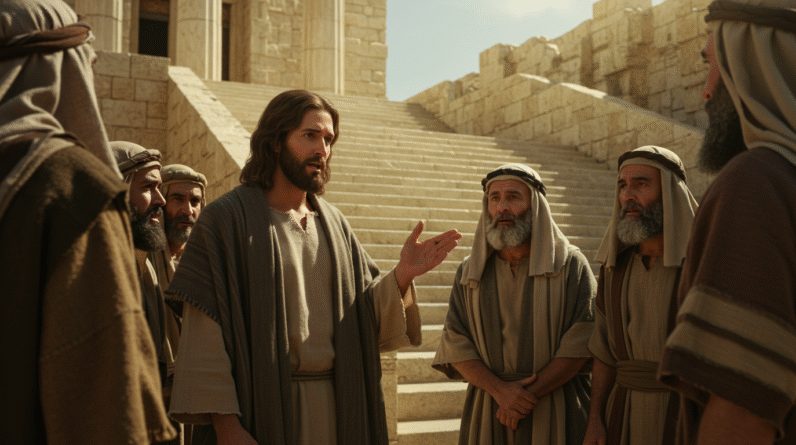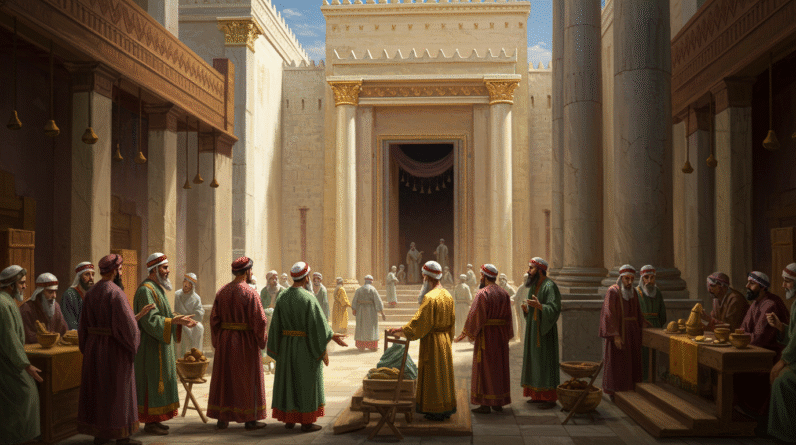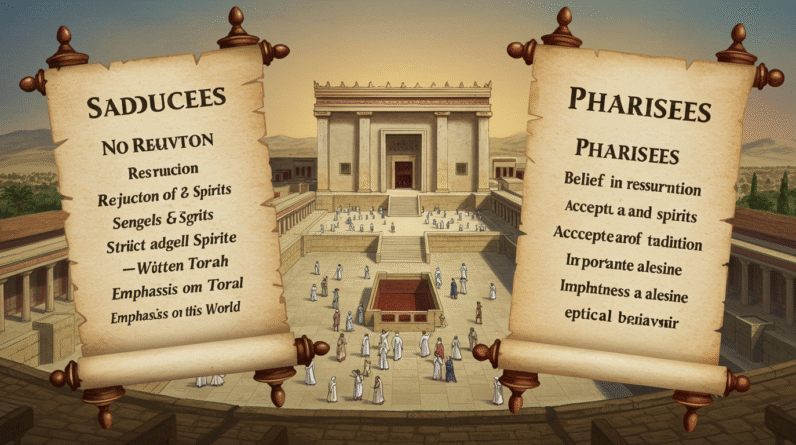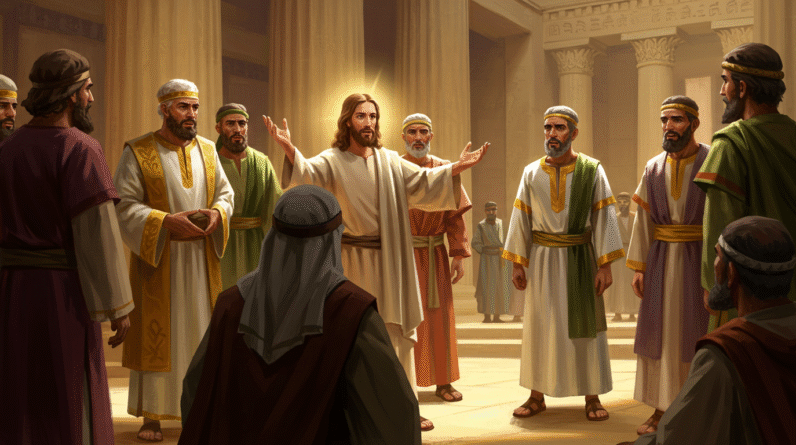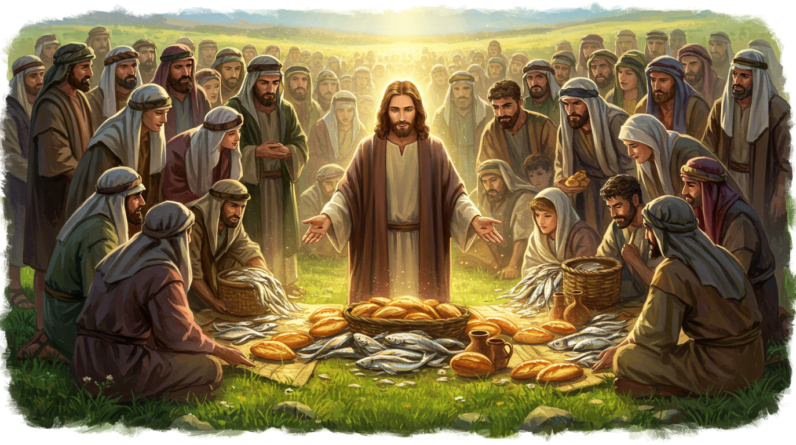Discover the journey of the twelve disciples, from ordinary lives to extraordinary missions, in Luke 6:12-16 and Matthew 10. Explore their timeless lessons today.
The 12 Disciples – Luke 6:12-16; Matthew 10
The twelve disciples are an integral part of the New Testament narrative, orbiting around the life and ministry of Jesus Christ. Their selection and subsequent journey alongside Jesus provide profound insights into faith, devotion, and transformation. In the books of Luke 6:12-16 and Matthew 10, we are introduced to these key figures who are chosen from ordinary life to follow an extraordinary path. Let’s explore these twelve individuals whose lives resonate with lessons that echo even today.

Introduction
Imagine being among a select few handpicked for a life-changing mission. The twelve disciples, chosen by Jesus, were ordinary men set on an extraordinary journey. They were tasked with spreading the gospel and witnessing the transformative power of Jesus’ teachings. As we delve into their lives, we uncover stories of doubt, faith, growth, and resilience, all of which offer timeless wisdom for us today.
Their Story in the Bible
The narrative of the twelve disciples begins in a significant moment of quiet reflection, where Jesus retreats to a mountainside to pray. It is in this serene setting that He chooses His inner circle. The account of this selection can be found vividly portrayed in Luke 6:12-16. Each disciple comes from diverse backgrounds, from fishermen to tax collectors, yet all are united under a singular purpose.
In the Gospel of Matthew 10, we follow Jesus as He commissions these disciples, naming them apostolic messengers of His teachings. With this calling, they are empowered to heal, cast out demons, and spread the message of repentance. These narratives are foundational, showcasing not just the formation of a close-knit group, but also the beginning of a movement that would change the course of history.
Name and Key References of the Disciples
- Peter (Simon)
Key Reference(s): Luke 6:14
Peter stands out often as the spokesperson for the group. Despite his impulsive nature, he becomes a monumental figure of faith after witnessing Christ’s resurrection. - James (Son of Zebedee)
Key Reference(s): Luke 6:14
Known for his enthusiasm and fervor, James, along with his brother John, was part of Jesus’ inner circle, witnessing significant events such as the Transfiguration. - John (Brother of James)
Key Reference(s): Luke 6:14
John, the beloved disciple, offers a profound understanding of love and truth through his writings, illustrating the compassionate teachings of Jesus. - Andrew
Key Reference(s): Luke 6:14
Often overshadowed by his brother Peter, Andrew’s quiet demeanor did not deter him from passionately bringing people, including Peter, to Christ. - Philip
Key Reference(s): Luke 6:14
Known for his practical approach and quest for understanding, Philip demonstrates how questioning leads to deeper faith. - Bartholomew (Nathanael)
Key Reference(s): Luke 6:14
Bartholomew’s skepticism is transformed into belief upon his encounter with Jesus, showing the power of firsthand revelation. - Matthew (Levi)
Key Reference(s): Luke 6:15
A former tax collector, Matthew’s transition to disciple highlights themes of redemption and the embracing of a new purpose. - Thomas (Didymus)
Key Reference(s): Luke 6:15
Often labeled as “Doubting Thomas,” his story illustrates the grace extended to those who seek truth amidst uncertainty. - James (Son of Alphaeus)
Key Reference(s): Luke 6:15
While less is known about this James, his humble presence reminds us of the strength found in quiet faithfulness. - Thaddaeus (Judas, Son of James)
Key Reference(s): Luke 6:16
His limited mention reflects the essentiality of unsung heroes in any movement, those who work diligently behind the scenes. - Simon the Zealot
Key Reference(s): Luke 6:15
Simon’s background as a zealot signifies the integration of diverse ideologies into Christ’s transformative message of peace. - Judas Iscariot
Key Reference(s): Luke 6:16
Perhaps the most enigmatic, Judas’ betrayal presents complex dialogues on free will, forgiveness, and consequence.
Lessons from Their Lives
The stories of the twelve disciples provide manifold lessons. First, they embody the potential for transformation. Peter, from impulsiveness to leadership; Matthew, from tax collection to evangelism. This teaches us that no past defines the limits of our future within God’s plan.
Secondly, they exemplify faith’s resilience in the face of trials. Thomas’ doubt did not disqualify him but refined his understanding of faith, encouraging us to seek truth and embrace growth through uncertainty.
Lastly, their stories highlight the power of unity in diversity. The disciples came with various perspectives, yet were united under Christ’s mission. This points to the beauty of collaboration and shared purpose, achieving what none could accomplish alone.
Connection to Today’s World
In a world marked by division and doubt, the narrative of the twelve disciples is remarkably pertinent. They remind us of the possibility of unity amidst diversity, encouraging us to find common ground beyond our differences. In their journey is a call to embrace our transformation, accepting our past, yet being open to the future God presents.
Their experience speaks to those wrestling with uncertainty and doubt, offering hope that faith does not demand perfection but persistence. They inspire communities to embody faith-driven action, compassion, and the courage to step into the unknown paths faith illuminates.

Key Bible Verse
“Jesus called his twelve disciples to him and gave them authority to drive out impure spirits and to heal every disease and sickness.” (Matthew 10:1)
This verse captures the pivotal empowerment granted to the disciples. Their authority symbolizes the courage and trust placed in them to carry forward Christ’s mission, a trust He extends to each of us today, in varied yet meaningful ways.
Thought-Provoking Question
How might your life change if, like the disciples, you fully embraced the transformation God offers, stepping out in faith beyond doubt and past missteps?
Historical/Cultural Context
Understanding the historical context of the disciples enhances our appreciation of their journey. These were men living under Roman occupation, faced with oppression and strife. Their calling into discipleship during such times speaks to the radical nature of Jesus’ ministry and the hope it offered. The diversity among them, including a tax collector and a zealot, showcases the breaking of societal barriers, reflecting the inclusive nature of the gospel message.
Comparison with Other Characters
In contrast to the disciples, consider the prophet Jonah. Both were called by God but responded differently. While Jonah initially fled, fearing the implications of God’s mission, the disciples, despite doubts, chose to follow, illustrating varied human responses to divine calling and the transformative power of obedience.
Prayer
Dear Lord, thank You for the examples set by the twelve disciples. As they learn to follow You amidst doubt and diversity, help us to embrace Your path with courage and unity. May we trust in Your guiding authority and seek transformation in our lives. Amen.



